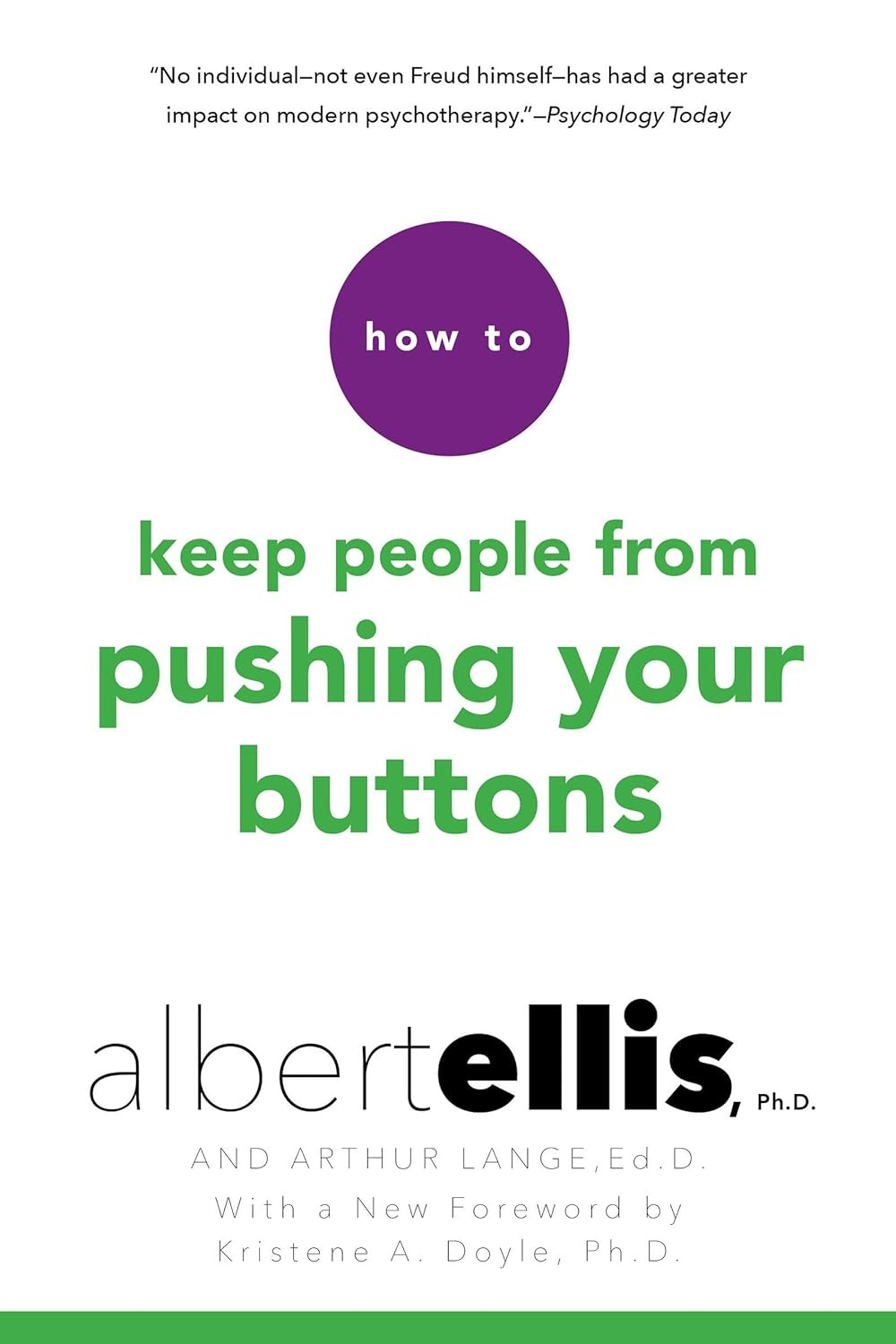How To Keep People From Pushing Your Buttons In One Step?
Are You a Victim of Your Emotions? Discover the Art of Emotional Control.
Dear friends, good afternoon! I am Tom Niklas, a seasoned writer and book reviewer. Welcome everyone to Tom's ReadVault, please subscribe to me and join us in reading 100 books a year together.
Today, I'm so happy to share with you all about the book "How To Keep People From Pushing Your Buttons". When we talked about the book, "Crucial Conversations", you realized that there was one especially important step - not letting yourself get worked up. As soon as you get impatient or angry, you can't follow the rest of the steps for having a successful crucial conversation. So learning to control your emotions and not let others easily manipulate you is critical. This book focuses specifically on this one key step, showing us how we can manage ourselves and not let external factors determine our state.
Read my another book review about Crucial Conversations
Get Promoted and a Raise in Just 4 Steps When Talking to Your Boss
·Crucial conversations can make or break your career and relationships. Find out the tips to having constructive dialogues when it matters most.
I've noticed that many people today struggle with letting their moods and mindsets get too caught up in what others say and do. For example, one fight with a partner or some criticism from your boss is enough to completely deflate you. Any minor setback immediately triggers endless anxiety and depression.
The author is world-renowned behavioral psychologist Dr. Albert Ellis. He was voted the second most influential psychologist in American history, behind only Carl Rogers, the founder of humanistic psychology. Sigmund Freud is a bit more well-known and is only the third one, but Dr. Ellis had an even higher position in the field. He spent his life studying the inner workings of human emotion and behavior, establishing important psychological therapies for regulating feelings. So he is highly respected for his academic status. His major contribution to this book is categorizing different "excessive" negative emotions and explaining how they arise.
Let's look at the four "excessive" negative emotional states he describes that we often experience. When taken to extremes, they can seriously impact our mental and physical health:
1. "Excessive anger" - Coming home to find your child has made a huge mess everywhere, you feel a flash of rage and start yelling at them. In calmer moments, you don't mind their playing around and making some disorder. And no child deserves to be suddenly shouted at like that.
2. "Excessive outrage" - Some people easily fly off the handle even over minor things. I once saw a man explosively scream at a flight attendant just for politely asking him to store his bag overhead rather than on the floor. I thought he might have psychological issues since he got so unreasonably enraged.
3. "Excessive depression" - When something goes wrong, like your child getting sick, you feel completely drained and demotivated to do anything. Of course, it's normal to feel worried if your kid is ill. But excessive self-pitying thoughts about how unlucky you are amplify the pain.
4. "Excessive guilt" - Dwelling on regrets about not spending more time with your parents before they passed and expressing your love. Over time this sadness grows into tortured self-blame. But no one's life is perfect - we need to practice self-forgiveness.
I'm sure many of you can relate to losing perspective and having these small things excessively control your state. The common theme is blowing things out of proportion in a way that damages your well-being. So how can we avoid falling into these destructive emotional traps? That is the key question this book will explore.
We talked about those four "excessive" negative emotions and why they're harmful. But how do they form in the first place? It comes down to a 3-step process for how we generate feelings, called the "ABC model".
The first step is A - the event itself. For example, your daughter starts doing drugs with a rebellious group of friends. That's A, something happened.
The second step is B - your judgments and explanations about it. What might you think? You might feel angry, worried about her future, or guilty for not fulfilling your duties as a parent. Each judgment leads to certain emotions.
The third step is C - the emotional and behavioral reactions produced according to your judgments in B. If you conclude "my child is hopeless," you might feel despair. If you decide "I failed my responsibilities as a parent," you'll feel guilt.
So which of those four negative emotions we discussed fall into this ABC model? Can you see it? It's C. The excessive anger, anxiety, fear, and guilt result from the preceding A and B, events and judgments. Those extreme feelings come from what came before.
Now, what do many people try to do to change C in real life? They try to alter A, right? They think if they can remove or avoid A, they won't experience C. So with a daughter doing drugs, they might try to control her and not let her use them. However, excessively controlling her freedom could drive even more rebellious behavior.
Keep reading with a 7-day free trial
Subscribe to ReadVault to keep reading this post and get 7 days of free access to the full post archives.




